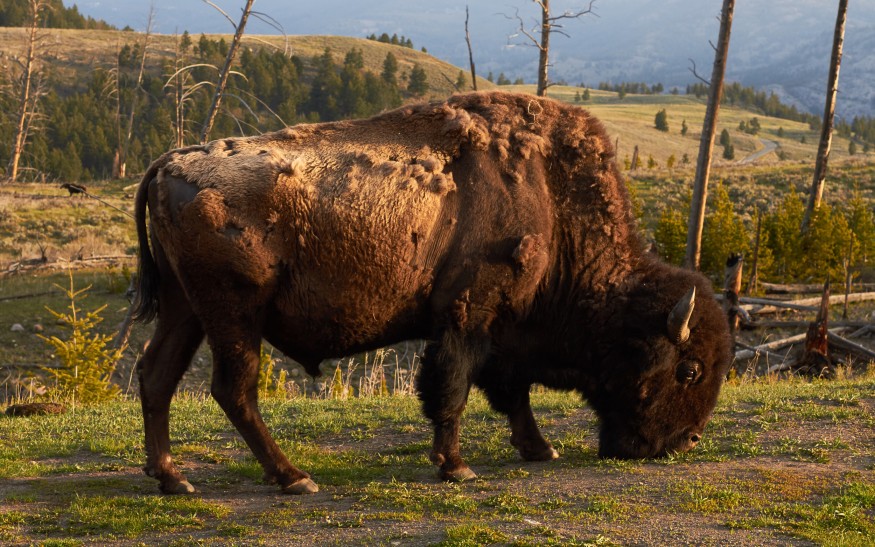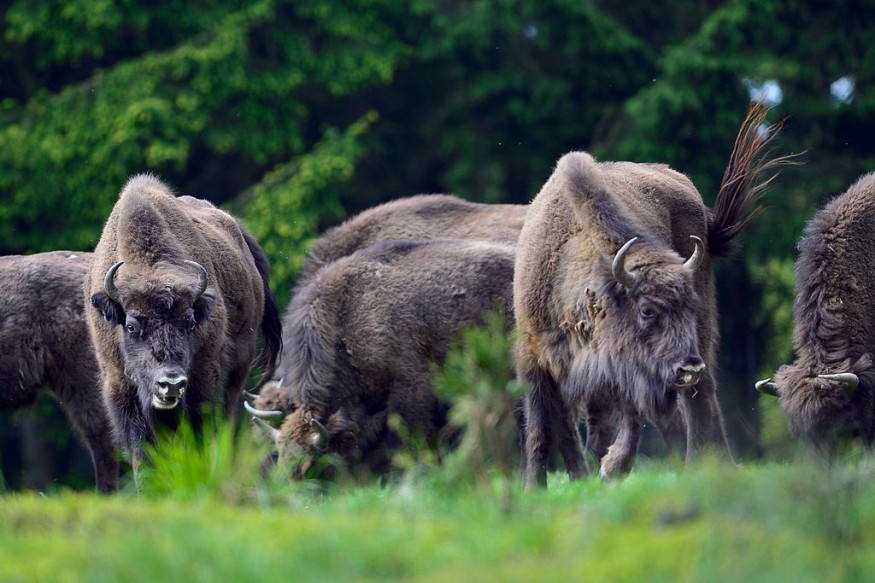When four wild bison arrive in north Kent in the spring of 2022, rangers will be in charge of the first wild bison to roam the UK in thousands of years. Bison are Europe's biggest land animals, with males weighing up to a ton. They were extinct in the wild a century ago but are now being reintroduced across the continent.
"They are amazing animals, genuinely gentle giants," says Donovan Wright, a colleague who spent 20 years in southern Africa dealing with rhinos, cape buffalo, and other huge animals. "The Kent project is unique, but it is no less significant."
"How incredible will it be to track the UK's largest land animal on foot right here in [Kent]?" Wright adds. It would be fantastic to be able to experience something like this only five miles from Canterbury, and it would help people reconnect with nature."
Related Article : USFWS Considers Reintroducing Bison to Montana Refuge
Reintroduction Training

Gibbs and Wright have recently returned from reintroduction training with wild bison herds in the Netherlands. Wilder Blean is a £1 million Kent initiative managed by the Kent Wildlife Trust and the Wildwood Trust, using funding from the People's Postcode Lottery. The bison's primary goal is to rewild a thick, former commercial pine forest.
"Bison are keystone species because they peel the bark off trees by rubbing up against them and eating it," Wright explains.
"They also create wonderful tracks through the foliage just by their sheer size, and they like dust bathing, resulting in large open spots. All of this is excellent for pioneer plants, insects, and sand lizards," Wright says, adding that the insects dwelling on the dead wood left behind are also fantastic for woodpeckers and bats.
Reaching the Netherlands
The rangers went to the Kraansvlak project in the Netherlands, where people could freely wander through an area populated by 14 bison, and no harmful incidents have ever occurred. However, studying the animals' behavior was an essential aspect of the training to assure their safety.
"You read the animals," Gibbs adds, "so if they're giving you indicators that they're not particularly comfortable with your presence, you back away."
All indications to look for are staring, attentive ears, head flicking up and down, pawing the ground, or the herd fanning out.
Keeping in Check

The animals in Kent will wear GPS collars, just as the bison in Kraansvlak, but these might be broken, so rangers will require tracking abilities to guarantee they can find the animals without scaring them.
The rangers also learned how to herd the bison into a corral to be checked for health. "There are a few trade secrets, such as specific meals," Gibbs explains, but they've kept under wraps, so the public doesn't try to attract the bison needlessly.
The Kraansvlak rangers required five years to be satisfied that the public could access the bison habitat alone, but Wright hasn't set a timeline for the Kent project. "We're doing it very slowly," he says.
A young bull will create the Kent herd from Germany, and the matriarch will be an older female from the Highland wildlife park in Scotland. "She looks stunning, and we're convinced she'll be an outstanding leader for the group," Gibbs adds.
Also Read : A Third of Wisconsin's Wild Wolves Killed in 60 Hours After Being Removed From Endangered List
For the most recent news about animal conservation, don't forget to follow Nature World News!
© 2025 NatureWorldNews.com All rights reserved. Do not reproduce without permission.





